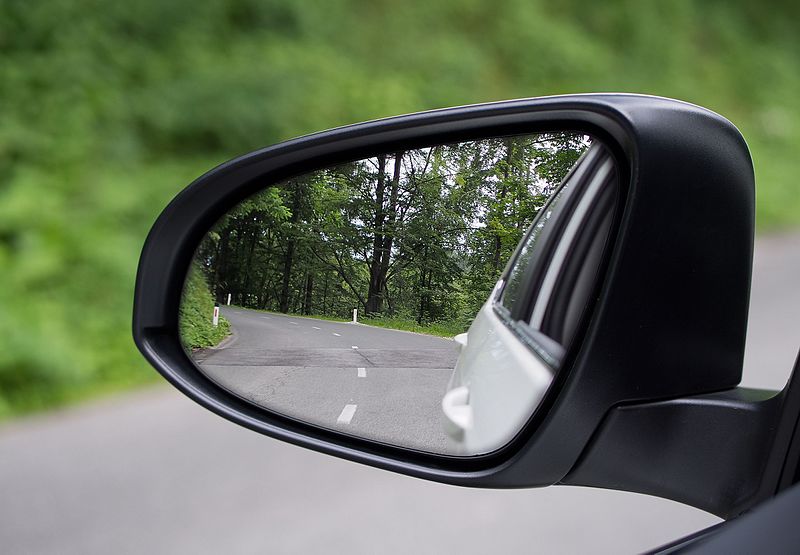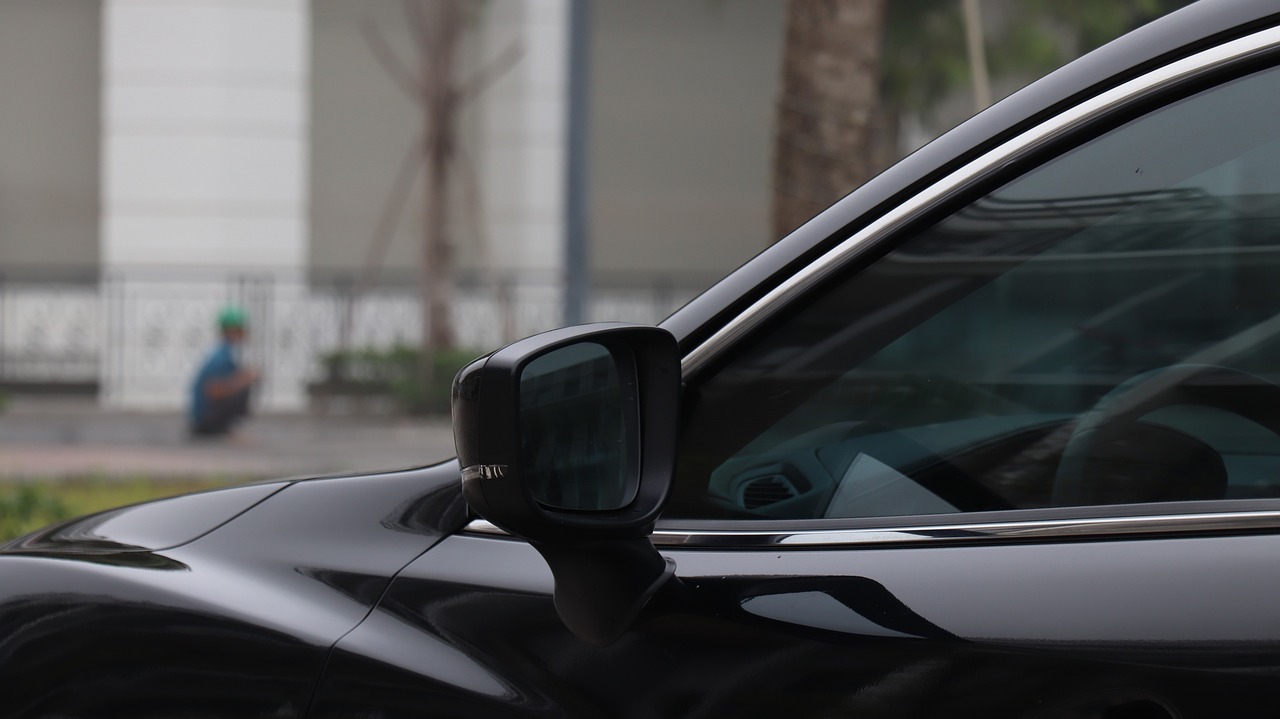Ever wondered how you would drive a car without a side-view mirror? Well, trust us when we say: There was a time when people used to do that. In the not-so-distant past, the evolution of the side-view mirror was a remarkable journey of innovation, necessity, and adaptability, ultimately reshaping the way we navigate our roads. From humble beginnings to high-tech advancements, the history of side-view mirrors on cars is a fascinating tale of both safety and style that reflects the ever-changing landscape of the automotive industry.
History of Side-View Mirrors
The late 19th and early 20th centuries marked a remarkable transition from horse-drawn carriages to mechanized vehicles. During this period, the automotive industry was in its nascent stages, with innovators and engineers pushing the boundaries of what personal transportation could be. Sideview mirrors were just the key ingredient absent from a safe driving experience!
In these early days, the concept of a side-view mirror was virtually non-existent in the automotive world. The absence of this fundamental component, which we now take for granted, is a notable feature of the earliest automobiles. The primary focus at that time was on ensuring that these novel contraptions could run reliably and safely. Luxuries and conveniences such as side-view mirrors were not yet a priority.
Drivers were confronted with the task of maneuvering their vehicles without the aid of side-view mirrors. Instead, they relied on turning their heads and even physically leaning out of the side windows to check for other vehicles or obstacles while navigating the bustling streets.
The First Side-View Mirror Introduced
In the annals of automotive history, one name stands out as the trailblazer in the realm of rear-view mirrors – Ray Harroun. It was the year 1911 and the inaugural running of the Indianapolis 500, one of the most prestigious racing events of its time. Ray Harroun, a skilled and innovative racing driver, was poised to make history.
Harroun, at the wheel of the Marmon Wasp, faced a unique challenge. He was not only a driver but also a visionary. Realizing the need for improved visibility during the race, he decided to take matters into his own hands. Harroun ingeniously attached a small, oblong mirror to the cowl of his Marmon Wasp. This rudimentary contraption, which we now recognize as the first rear-view mirror, aimed to give him a better view of his competitors on the track.
And history was made. Harroun’s inventive use of the rear-view mirror proved to be a game-changer. He went on to win the inaugural Indianapolis 500, cementing the mirror’s place in automotive lore. This was a key step in underscoring its critical role in enhancing safety and performance on the race track.
Engineer Elmer Berger and the “Cop-Spotter” Door Mirror (1921)
Fast forward to 1921, when engineer Elmer Berger applied for a patent for what he dubbed the “Cop-Spotter” door mirror. This marked another significant development in the evolution of automotive mirrors. While Harroun’s rear-view mirror had found its purpose on the racetrack, Berger’s invention aimed to address a growing concern on the road – visibility and awareness.
The “Cop-Spotter” door mirror was designed to aid drivers in spotting police officers or law enforcement vehicles approaching from behind. This innovative concept tapped into the evolving need for increased safety and awareness on the road, especially in an era when traffic regulations were becoming more prevalent.
Mirrors as Optional Add-Ons: The Influence of the Federal Highway Act (1956)
The use of mirrors as optional add-ons gained momentum in the mid-20th century, thanks in part to the Federal Highway Act of 1956. This monumental legislation revolutionized the American road network by funding the construction of multi-lane highways, forever altering the driving landscape.
As multi-lane highways became the norm, drivers increasingly recognized the value of enhanced visibility and safety, spurring the demand for side-view mirrors. Manufacturers responded by offering mirrors as optional additions to their vehicles.
Federal Motor Vehicle Safety Standards
The U.S. government began implementing safety standards for vehicles in the 1960s and 1970s, which included requirements for rear-view mirrors. These standards made side-view mirrors more standardized and universally integrated into vehicles.
These standards were also overseen by the National Highway Traffic Safety Administration (NHTSA). They were established to regulate the safety of motor vehicles, covering various aspects such as crashworthiness, occupant protection, and vehicle performance. The inclusion of rear-view mirrors in these standards occurred as part of broader efforts to enhance vehicle safety, and it unfolded over several years:
In particular, FMVSS No. 111, titled “Rearview Mirrors,” addressed the requirements for rear-view mirrors in vehicles. These regulations specified the size, reflectivity, and positioning of side-view and interior mirrors. The FMVSS No. 111 regulations were gradually implemented in the 1960s and 1970s. They were focused on:
- Reducing Blind Spots: The requirement for properly positioned and sized side-view mirrors significantly reduced blind spots for drivers, enhancing their ability to see other vehicles and obstacles. This was a crucial safety improvement, especially during lane changes and merging onto highways.
- Minimizing Collisions: Rear-view mirrors are essential for collision prevention, enabling drivers to assess their surroundings and make informed decisions. Standardized mirrors helped prevent accidents and reduce the severity of collisions.
- Legal Compliance: Compliance with FMVSS is mandatory for automakers to sell vehicles in the United States. This ensures that every new vehicle on the market meets specific safety standards, including the presence and functionality of rear-view mirrors.
From this moment onwards, side view mirrors became a necessity. All that carries later is the improvements in the overall technology and design with a number of added features.
Side View Mirrors Today
Modern side view mirrors are a far cry from their early, basic counterparts. These features, designed to improve safety, comfort, and convenience, have become integral to the driving experience in contemporary vehicles.
- Auto-Dimming Mirrors: Auto-dimming side view mirrors are particularly useful when driving at night. They feature sensors that detect the brightness of headlights from vehicles behind you. When intense headlights are detected, the mirror automatically dims to reduce glare, preventing discomfort for the driver.
- Integrated Turn Signals: Some modern side view mirrors come with integrated turn signal indicators. These indicators are often embedded in the mirror’s housing and light up when you activate your turn signal. This not only enhances safety by signaling your intentions to other drivers but also makes your vehicle more visible on the road.
- Memory Settings: Memory settings for side view mirrors are common in luxury and high-end vehicles. These settings allow drivers to program and recall their preferred mirror positions, which is especially handy in households with multiple drivers. With the push of a button, the mirrors adjust to the driver’s preset positions.
- Power Folding Mirrors: Power folding mirrors are a convenient feature for parking in tight spaces. These mirrors can be electronically folded against the vehicle, reducing the risk of damage in crowded parking lots or narrow streets. When the vehicle is started or locked, the mirrors automatically unfold for driving.
- Camera Integration: Some advanced vehicles are equipped with cameras integrated into the side mirrors. These cameras serve multiple functions, including improving visibility for parking and providing a bird’s-eye view of the area around the vehicle. They also support features like lane-keeping assistance.
- Electrochromic Glass: In addition to auto-dimming, some side mirrors use electrochromic glass that can change its tint to reduce glare and enhance visibility in bright sunlight. This feature is particularly beneficial for driving in changing lighting conditions.
A Timeline of Side-view Mirrors on Cars
The evolution of side-view mirrors has been a journey from basic manual mirrors to advanced digital systems.
Early 20th Century: Basic Manual Mirrors
- 1911: Racing driver Ray Harroun uses the first rear-view mirror in the Marmon Wasp, which was a simple flat mirror attached to the cowl of his car. This innovation enhances safety and visibility during races.
- 1920s: Exterior side-view mirrors start appearing on some automobiles, although they are relatively small and offer limited adjustability.
1930s – 1970s: Streamlined Design
- 1930s – 1940s: Automotive design shifts toward more streamlined shapes, influencing mirror design. Mirrors begin to blend better with car aesthetics.
- 1950s – 1960s: Remote-controlled mirrors become more common. Drivers can adjust the mirrors from inside the car, improving convenience.
- 1960s: The U.S. government introduces Federal Motor Vehicle Safety Standards (FMVSS). Regulations mandate the presence and reflectivity of side-view mirrors, ensuring standardized safety features.
1980s – 1990s: Heated Mirrors
- Heated mirrors are introduced which help to prevent fog and ice buildup for improved visibility.
2000s – Present: Digital Mirrors and Advanced Features
- 2000s: Digital rear-view mirrors with cameras start emerging. These mirrors use cameras to display the rear view on an interior screen, reducing blind spots and enhancing night vision.
- 2010s: Blind-spot detection systems become popular. Sensors monitor blind spots and alert drivers to vehicles in adjacent lanes for added safety.
- 2020s: Augmented reality displays are tested. These advanced mirrors overlay information like navigation directions or hazard warnings on the mirror’s reflection, making driving safer and more informative.
- Ongoing: Continued integration with advanced driver assistance systems (ADAS) and autonomous driving technology. Mirrors are becoming smarter, working in synergy with other safety features.
Conclusion
The history of side-view mirrors on cars is a testament to the continuous evolution of automotive technology. From the early days when they were virtually non-existent to the pioneering use of the first rear-view mirror by Ray Harroun in 1911, side-view mirrors have come a long way. The introduction of various features, from power adjustability to digital cameras and augmented reality displays, has significantly enhanced safety, convenience, and driving experiences!



